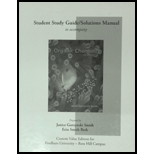
(a)
Interpretation:
The compound A in the given reaction is to be identified.
Concept introduction:
Carboxylic acids are the carbon compounds that contain carboxyl group as a major functional group. They are polar in nature due to electronegativity difference between the atoms in a compound. They sometimes exist as a dimer. Dimers are the compounds that consist of two monomer units connected by bonds or forces. Carboxylic acids are synthesized from
(b)
Interpretation:
The compound B in the given reaction is to be identified.
Concept introduction:
Carboxylic acids are the carbon compounds that contain carboxyl group as a major functional group. They are polar in nature due to electronegativity difference between the atoms in a compound. They sometimes exist as a dimer. Dimers are the compounds that consist of two monomer units connected by bonds or forces. Carboxylic acids are synthesized from alkynes, alkene, benzene derivatives, alcohol and allylic halides by using different reagents.
(c)
Interpretation:
The compound C in the given reaction is to be identified.
Concept introduction:
Carboxylic acids are the carbon compounds that contain carboxyl group as a major functional group. They are polar in nature due to electronegativity difference between the atoms in a compound. They sometimes exist as a dimer. Dimers are the compounds that consist of two monomer units connected by bonds or forces. Carboxylic acids are synthesized from alkynes, alkene, benzene derivatives, alcohol and allylic halides by using different reagents.
(d)
Interpretation:
The compound D in the given reaction is to be identified.
Concept introduction:
Carboxylic acids are the carbon compounds that contain carboxyl group as a major functional group. They are polar in nature due to electronegativity difference between the atoms in a compound. They sometimes exist as a dimer. Dimers are the compounds that consist of two monomer units connected by bonds or forces. Carboxylic acids are synthesized from alkynes, alkene, benzene derivatives, alcohol and allylic halides by using different reagents.
Want to see the full answer?
Check out a sample textbook solution
Chapter 19 Solutions
Organic Chemistry -Study Guide / Solution Manual (Custom)
- Draw the product formed when the α,β-unsaturated ketone A is treatedwith following reagent. H2 (excess), Pd-Carrow_forwardIdentify the lettered compounds in each reaction sequence.Draw the product formed when phenylacetonitrile (C6H5CH2CN) istreated with below reagent. H3O+arrow_forwardPlease Identify A-Harrow_forward
- Identify the lettered compounds in each reaction sequence.Draw the product formed when phenylacetonitrile (C6H5CH2CN) istreated with below reagent. H2O, −OHarrow_forwardDraw the six products (including stereoisomers) formed when A is treated with NBS + hv.arrow_forwardIdentify the intermediates (A–C) in the following reaction sequence, which was used to prepare racemic ooxacin. One enantiomer of the product, levooxacin, is an antibiotic used to treat severe bacterial infections that have not responded to other drugs.arrow_forward
- Identify the acetal carbons in A, and draw the products formed by hydrolysis of A with aqueous acid.arrow_forwardDraw structures for A-D for the following:arrow_forwardDraw the products formed when p-methylaniline (p-CH3C6H4NH2) istreated with following reagent. Part (b), then CH3COCl, AlCl3arrow_forward

 Chemistry for Today: General, Organic, and Bioche...ChemistryISBN:9781305960060Author:Spencer L. Seager, Michael R. Slabaugh, Maren S. HansenPublisher:Cengage Learning
Chemistry for Today: General, Organic, and Bioche...ChemistryISBN:9781305960060Author:Spencer L. Seager, Michael R. Slabaugh, Maren S. HansenPublisher:Cengage Learning

